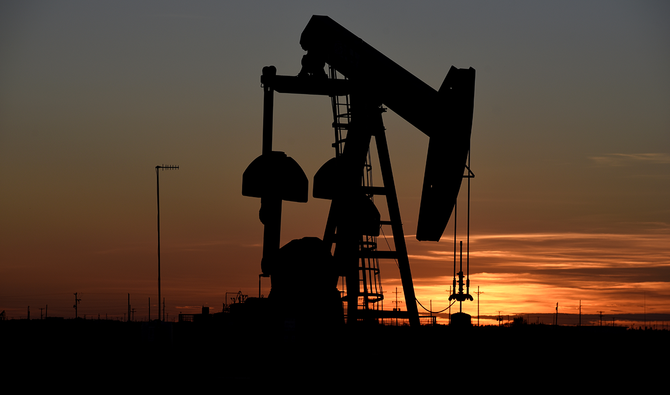What to make of last week’s oil price rally?

https://arab.news/9gsya
What is behind the oil price rally that lasted nearly two weeks? Last week Brent went from $25.50 per barrel traded on Monday to a high of $32.27. The psychological event was when Brent crossed the $30 per barrel threshold on Tuesday. The price of Brent has doubled since hitting its lowest point in 18 years.
This week the July contract retrenched slightly on fears over a second wave of the coronavirus disease (COVID-19) pandemic. It was at $30.25 per barrel early morning in Europe.
When West Texas Intermediate (WTI) went below zero on that fatal day on April 20 it was a shot across the bow indicating just how deep the recession due to COVID-19 would be.
Demand had fallen off the cliff by some 29 million barrels per day (bpd) for April, according to the International Energy Agency (IEA). That constituted around one-third of oil consumption at the beginning of the year. Demand will fall by 23 million bpd in the second quarter when averaging the agency’s monthly forecasts. In mid-April, OPEC+ (an alliance between the OPEC countries and their 10 non-OPEC allies lead by Russia) agreed to cut 9.7 million bpd as of May 1. The G20 energy ministers explicitly supported the announcement. G20 producers who are not members of OPEC+ made supporting statements indicating they also envisaged lowering production — although not by explicit cuts but rather via attrition due to falling demand.
Indeed, Saudi Arabia started cutting production before May 1. When the date came OPEC+ production went down. Last week Norway announced it would also reduce production by 250,000 bpd in June and 134,000 bpd for the remainder of the year.
The US surprised. According to the IEA, production stood at 11.9 million bpd for the week ending May 1. Texas production could have fallen by almost 1 million bpd, which would represent 20 percent. North Dakota’s output contracted by 400,000 bpd, nearly one-third.
The rig count was astounding. It went below 400 for the first time since 1940. According to US oil industry company Baker Hughes, it was at 374 for the week ending May 1, a decline of 34 for the week and 614 fewer than a year ago. This reflected the dire situation in the shale oil patch. However, all US representatives of big oil, Exxon, Chevron, and ConocoPhillips, also cut production unexpectedly.
None of this was further surprising when looking at reduced refinery runs and the lack of storage throughout the US, but especially at Cushing.
We have not yet seen the worst in terms of economic downturn, if the unemployment numbers are anything to go by
Cornelia Meyer
While all of this happened on the supply side, several economies eased their lockdown measures which had a positive impact on demand. China drew 9.7 million barrels in reserves.
Recent developments seem to indicate that the oil market may have started on the long and hard road to rebalancing. This thesis was supported by Saudi actions last week. Saudi Aramco reduced its discounts to suppliers in Asia and elsewhere. They came down by as much as 60 percent in Europe, namely from $10 per barrel to $4. This indicated two things: For one, that the war for market share/price with Russia was over and more importantly, that Aramco considered that the market had started to rebalance.
All the above is positive but the road to economic recovery has not yet started, in contrast to the bullish equity markets which had rallied on the back of massive government stimulus.
The latest unemployment rate of 14.7 percent in the US is the harbinger of worse to come. In Europe too, there are many unemployed and more than 40 million furloughed, many of whom will not keep their jobs. This is the world’s largest economy and its largest economic bloc.
While East Asia is recovering, China, Japan and Korea are export-driven economies who will suffer when their counterparties decline.
We have not yet seen the worst in terms of economic downturn, if the unemployment numbers are anything to go by. The shape and speed of any recovery will also depend on how well the virus is contained and there are problems ahead if the latest developments in east Asia are anything to go by.
In other words, it was great to see oil recover over the last two weeks. However, how sustainable that road to rebalancing the markets is, depends entirely on what happens in the real economy going forward.
• Cornelia Meyer is a business consultant, macro-economist and energy expert. Twitter: @MeyerResources







































